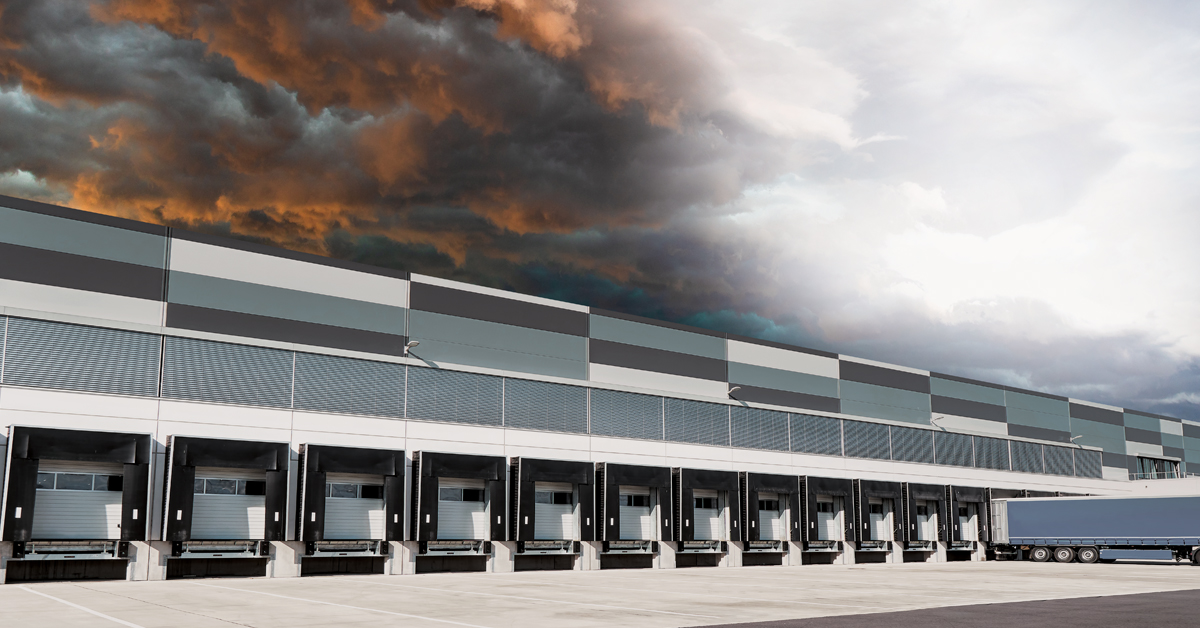Industrial real estate emerged in the past decade as one of the darling asset classes that now rivals multifamily housing. Its tailwinds are evident to anyone observing cultural and economic trends. E-commerce and the increased sophistication of logistics technology have brought the terms “same-day delivery” and “last-mile distribution” into common usage.
A decline in big-box store traffic has benefited warehouse and distribution centers as consumer spending has increasingly moved online. At the same time, housing production has not kept up with demand and cities have failed to provide the required density, leading to double-digit year-over-year increases for apartment rents in many metropolitan areas.
These factors have pushed capitalization (cap) rates, a popular measurement of a real estate investment’s potential profitability, to record lows for multifamily trades. With cap rates, the lower the percentage, the less risk for the investment.
The rates for multifamily transactions dropped from an average of 6% in late 2015 to 4.6% at the end of 2021, CBRE reported.
Higher cap rates and the ability to resize spaces may result in multitenant industrial properties being favored over apartments if the economy sours and rents level off.
Industrial cap-rate compression has recently outpaced that of multifamily. According to CBRE, rates for Class C industrial space decreased by 2% in 2021, compared to 1.4% for Class C multi-family properties. The Class C distinction is notable because it is a sign that tenants have paid premium rents for older, inferior space due to a distinct lack of supply.
Supercharged rent growth, supply-constrained markets and two years of historically low debt costs have been good for industrial real estate owners. But conditions are clearly shifting. To better serve their clients, commercial mortgage originators need to understand the factors that are making industrial a sought-after sector.
Changing tides
At the midway point of 2022, inexpensive debt was no longer readily available, and worries of a recession were causing doubt as to whether the recent trend of rising rents would continue. New fixed-rate loans on the commercial mortgage-backed securities market were priced substantially higher (averaging more than 5%) than earlier in the year and had lower levels of leverage. Banks also were slowing their origination activities, widening spreads and being more conservative overall.
Active buyers are weighing the use of less accretive debt or waiting for pricing to come down. Precursors to rising cap rates are already happening. There are fewer bids on actively marketed assets and asking prices for properties have fallen by nearly 5% since the start of the year, according to Green Street Advisors. In the near term, cap rates will probably rise, but this is likely to impact industrial and multifamily last and least due to their strong fundamentals relative to other property types.
The industrial real estate sector
stands to benefit from a move toward onshoring, a slow-moving but encouraging reaction by corporations that were hit hard by the breakdown of just-in-time overseas supply chains. And the August 2022 passage of the Creating Helpful Incentives to Produce Semiconductors (CHIPS) and Science Act includes $52.7 billion to support chip manufacturing and research in the U.S..
This is a major move toward incentivizing domestic, high-tech manufacturing. E-commerce is still strong. But with higher interest rates and less access to capital, growth may slow. Industrial property owners may need to upgrade Class B and C assets as demand starts to soften.
Value-add strategy
Industrial real estate owners can no longer sit passively while rents tick up, vacancy rates shrink toward zero and per-square-foot values increase every year. In this new environment, some of the challenges facing owners may include upward pressure on expenses due to rising energy costs and higher overall inflation.
There also may be increased lender adherence to (and enforcement of) debt-yield ratios, debt-service-coverage ratios, cash sweeps and lockbox covenants. Other possible impacts may include more complex and dynamic tenant goals and needs.
To help combat some of these issues, owners must have space that can be easily reconfigured to accommodate a large variety of tenant uses in addition to upsizing, downsizing or consolidating. Since individual industries and tenants are not affected equally in recessions, the value of diversified tenant rent rolls and all-inclusive space offerings become critically important.
Jonathan Gray, president and chief operating officer at Blackstone, stated on an earnings call this past April that “in an inflationary environment, the importance of owning things where cash flow can grow is super important.” He further added that real estate sectors with “good fundamentals and short-duration leases have pricing power.”
Consequently, 1 million square feet of Class A distribution space that is leased for 10 years by a credit tenant should trade like an investment-grade bond. Consider the current market value of bonds issued in the past 24 months. Reasonably guaranteed cash flow isn’t enough to protect the value of an asset or security in an inflationary and rising interest rate environment.
Experience matters
Light industrial and multiuse logistics assets typically have 20,000 to 100,000 square feet of space. Such assets often have a diverse base of warehousing, manufacturing, research and development, distribution and showroom tenants. Many assets are older buildings located in dense infill submarkets.
An experienced operator that can take advantage of low vacancy rates — and has the skill set to make intelligent updates and reconfigurations — will maximize efficiency. Cap rates for these existing properties are generally higher than for conventional warehouse and distribution assets, and they are priced well below estimated replacement costs, making them a good choice for investors who can deploy a smart value-add strategy.
During an economic slowdown, some small businesses downsize their footprints. Others will close their doors entirely. Onshoring production and e-commerce demand have kept multiuse logistics properties full, but a down market reduces occupancy rates. A highly diversified rent roll provides stability as market forces cause various industries and businesses to expand or contract. Successful operators will respond by allowing existing tenants to reduce their space while attracting new tenants that are downsizing to take the remainder.
All signs point to the industrial sector retaining its status as a premier asset class. Higher cap rates and the ability to resize spaces may result in multitenant industrial properties being favored over apartments if the economy sours and rents level off. Multifamily properties in primary and secondary markets have been traded at razor-thin cap rates and underwritten to double-digit rent growth. Turning 15,000 square feet of distribution space into three 5,000-square-foot warehouses is relatively inexpensive. Apartment buildings, of course, simply can’t be reconfigured that way.
● ● ●
Rising mortgage costs and increased underwriting standards are putting pressure on transactions. Lenders are stressing net operating incomes by demanding more equity at the closing table. Operators need to raise more equity and returns may be tighter.
For originators and developers, success in this climate will come down to market expertise, a deep knowledge of the tenant base, deployment of a strong value-add strategy and the placement of a moderate amount of debt. Knowledge of real estate fundamentals will favor the most talented originators and operators, helping to steer them through this uncertain period. ●
-
Adam Candler is an associate director for BKM Capital Partners. As a longtime real estate capital markets and business development professional, he has been involved in placing or originating full capital-stack financing via banks, life companies, conduits, debt funds and agencies, with a focus on construction, repositioning and value-add strategies. He received an MBA from the University of Southern California, and he previously served in the U.S. Navy as a helicopter search and rescue swimmer. Reach Candler at (949) 301-9238.
View all posts








